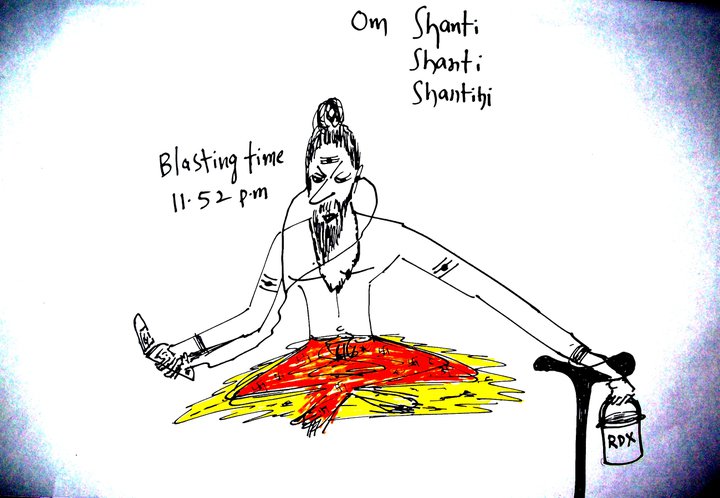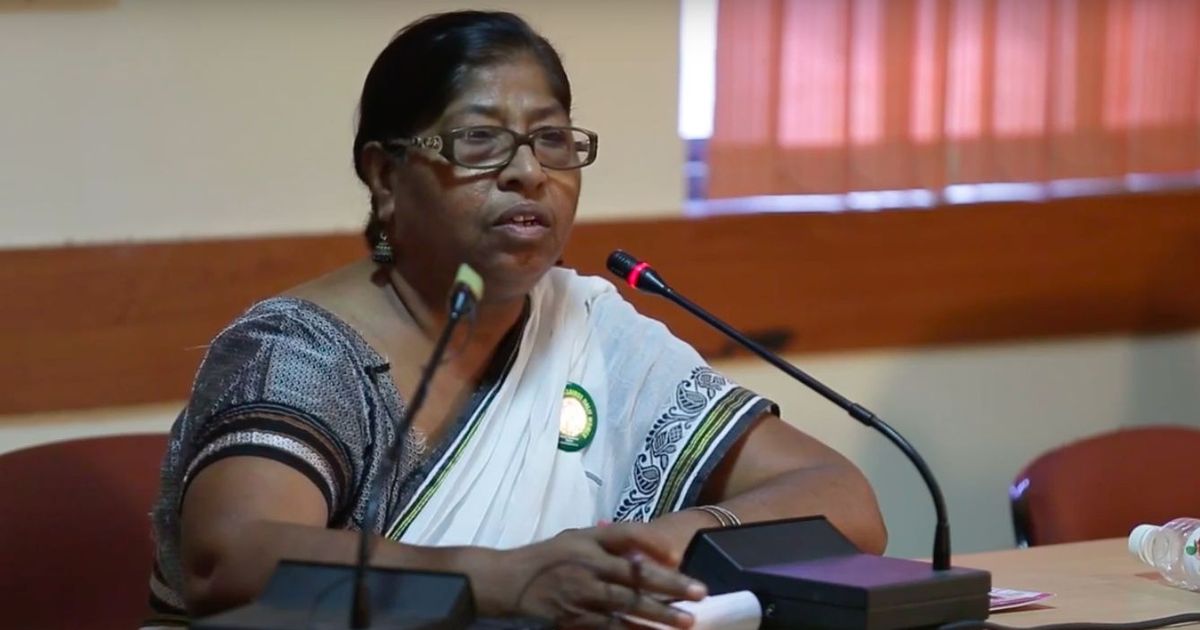Rahul Bhalerao
 Recent controversies, both local and international, have sparked a series of discussions and debates in media and social networks about the Hindu holy book Bhagvad Gita. When the Karnataka Education minister decided to saffronize the education system by proposing Gita teachings to be made compulsory, the left, liberal and secular voices attacked the BJP for mixing secular education with religious propaganda.
Recent controversies, both local and international, have sparked a series of discussions and debates in media and social networks about the Hindu holy book Bhagvad Gita. When the Karnataka Education minister decided to saffronize the education system by proposing Gita teachings to be made compulsory, the left, liberal and secular voices attacked the BJP for mixing secular education with religious propaganda.
On the other hand, when Russia decided to ban the holy book on the premise of its justifications for violence, the saffron parties found support in the same left, liberal and secular voices pitching against the Russian controversy, making it a national issue in the Parliament over cultural pride. So how is it that the book that is entitled to one faith is also accepted as the core of cultural values of the entire nation?
How is it that Hinduism, which can hardly be considered as one faith, a homage to hundreds of contradicting spiritual theories, a collection of traditions and rituals that are so exclusively different for each community, caste and region, with a bunch of religious texts including Vedas, Shastras, Puranas, Smritis, each one declaring themselves undisputable, unquestionable and still exhibiting contradictions both within and among themselves, has revered Bhagvad Gita which is only one section of the epic Mahabharata which had a singular purpose of justifying war, to be the one book that is the essence of the entire religion? And more than the one religion, why is it now being showcased as the essence of the entire Indian culture?
The proponents of Hinduism do not criticize one book in favor of the other. They do not even try to highlight the differences between these texts. What they really do is to interpret them in order to highlight how everything in them is highly spiritual, how they contain high moral values, how they are equivalent and coherent with the theories of modern science and how they alone propose solutions that are good for individuals and society at large.
On the other side, the critics of these texts see only two things common among them, entwined among the number of contradictory theories, Violence and Caste.
Before we take a critical view of the Bhagvad Gita in this context, let us see what arguments the proponents have to offer in support of it. Taking cues from the discussions in media and social networks let me first make an attempt to justify the Gita as per its proponents’ views against the common criticism it faces.
Both the opponents and proponents of Gita would make a point on Caste in the Gita based on this verse:
Chapter 4, Verse 13:
“chātur-varṇyaḿ mayā sṛṣṭaḿ guṇa-karma-vibhāgaśaḥ |
tasya kartāram api māḿ viddhy akartāram avyayam ||”
“According to the three modes of material nature and the work associated with them, the four divisions of human society are created by Me. And although I am the creator of this system, you should know that I am yet the non-doer, being unchangeable.”
So the claim is made that although Krishna says that the division of the society into four Varnas was made by him, he puts an emphasis on ‘guna-karma’, qualities and actions of individuals, past deeds. Proponents further claim that nowhere does he mention ‘birth’ as a basis for determining Varna. A person attains his Varna based on his innate qualities and past deeds. Good actions will lead to higher Varna, bad actions will lead to lower Varna. One has to work hard for attaining supremacy in society. This system is present everywhere in the world. To become a high ranked official, one has to be educated enough.
There are few more verses in Mahabharata regarding Caste that the proponents use as a justification.
“ekavarṇama idama pūrvaṃ viśvama āsida yudhiśthira |
karmakriyāviśesena caturvarṇyama pratiśthitama||”
“So, Even the distinction between castes is artificial – and karma determines what profession you’ll belong.”
Hence it is clear that there is nothing spiritual about the caste system and it is based on Karma. According to Hindu scriptures, originally the whole world was of one Varna but it is the distinction in duties that has divided society into four Varnas.
So what is wrong? It is really a merit-based system for the overall good of society.
Apart from the objections on caste, the very common objection raised against Gita is the more popular one about Violence. Now while the whole purpose of Gita was to convince Arjuna that there was nothing wrong with war and the killing of siblings, Gita supporters do not agree that it is justifying violence. The arguments made in this respect are again based on what Gita itself claims. Since the war was not merely between two rulers over an issue of an empire, and since it was a war between evil and good, and a war for regaining the rights of noble men, Pandavas, it was not only inevitable but also a very spiritual one. Nevertheless, Krishna further assures Arjuna that by killing his loved ones he is merely destroying their bodies and not their souls, that souls are immortal and by killing them physically he is only helping them to reunite with the ultimate soul of the universe, so he should not feel any regret for it. Hence the violence is merely of a physical nature and spiritually there was no violence at all. Hence Gita certainly does not justify violence!
After listening to all such arguments from the proponents, let us see if these are merely self-satisfying justifications or do they hold any real ground.
Let’s come out of the mythological world and take a relook at Gita from a historical and more practical view. The first question appears, when was Gita really written? What were the social structures and currents that were present when somebody took the pains of writing Gita to teach the religion? Historically, it is no secret that Mahabharata as it exists today was not the same epic since forever. It has undergone multiple versions.
Broadly there are three phases that it took to gain its most recent form, starting from the short story ‘Jaya’ about the fight between brothers, then an elaborate form of ‘Bharata’ and finally a huge epic about a holy war, ‘Mahabharata’. Scholars believe that Gita dates back to around 200 BCE and 200 CE, which is much after the establishment of Buddhism and Jainism. If we consider Gita to be of such a great importance in the Vedic/Hindu religion, philosophy and Indian culture, considering the spiritual awakening and revolution that started with Buddhism and Jainism, just like Vedas have been mentioned by Buddha, Gita too should have found some serious consideration in the literature present at that time. But we do not find any such significant reference to Gita in any of the early Buddhist or Jain literature.
We however find references to Buddhist and Jain artifacts in not only Mahabharata but also in Manusmriti. In Vana Parva of Mahabharata where there are discourses at length about how the social order of Varna will be distorted in Kali Yuga, how Sudras will rise to the middle order of society, how the dogmas and rituals of religion, especially sacrifices, will become extinct, and how Kalki, the tiger among Brahmans, will correct all this mayhem, there is also a fear expressed that in places of temples of God there will be Stupas (the tomb like structure common in Buddhist temples) containing relics.
Building Stupas that contain relics of Buddha is a common practice in Buddhism. But this finding mention and that too a fearful mention of invasion of a new faith in Mahabharata certainly suggests that by the time these portions were written, Buddhism had already taken a place in Indian society and there was enormous fear among Brahmans about not being able to maintain their social status and religious powers which they had gained by means of dogmatic rituals like fire worshiping and sacrifices and establishing the social order of Caste: all of which were endangered by the revolution brought in by Buddhism and Jainism. This kind of disregard for Buddhist and Jain monks is also found in Manusmriti where it lays down a rule that forbids giving any food or donations to those monks. It is not possible to imagine that Mahabharata, Gita and Manusmriti could have been completely framed before the time of Buddha; and in whatever form they might have been at the time of Buddha, they certainly could not have any spiritual importance, unlike Vedas.
What’s more, while violence and war is a common aspect in most of the Hindu mythology including Vedas, Gita is the only text that attempts to justify it to such a great extent. For the first time, the protagonist in the story raises concerns over violence and the God himself justifies what he should do. What was the need to suddenly justify violence if it was already present in the ancient scriptures without any remorse? This pretty much makes it obvious that Gita had been written in the post-Buddhism era when violence was not seen as a moral act and needed enormous justification for it.
The revolution initiated by Buddhism was not just a moral and spiritual awakening, but it was leaving a lasting effect on the social lives of people. For the first time, Caste was made irrelevant for religion. For the first time, a spiritual leader had preached equality among human beings without any clauses and conditions. This equality and revolution was not just theoretical in nature, one can find multiple instances within Buddhist literature where Buddha himself had intentionally appointed kings and Brahmans at ranks lower than or equal to some of their own servants, the lower castes, within the Sangha. With the rise of the Mouryan Empire and spread of Buddhism, it was not just the Vedic religion, traditions and myths that had started losing relevance, it was the whole social structure and the monopoly of Brahmans over religion and people that was losing relevance.
It is no secret that Sankaracharya had to fight against Buddhist scholars and Kings in all aspects to revive the religion of Vedas. Even if it required murdering the last Mouryan King in the hands of Pushyamitra Shunga or burning Buddhist monks alive or rephrasing the scriptures and traditions of Brahmanic religion in such a way that they would be more acceptable to the people of that time. If someone thinks he can not eat beef or that he is a vegetarian just because he is Hindu, then that person needs to revisit Vedas and Hindu mythology to find out how many mentions of the holy meals contain references to cow and horse meat. It is a religion readjusted to convince people who are under the influence of another philosophy.
It is not very difficult to understand how Mahabharata and Gita became important tools used in this counter-revolution. It gives a philosophical justification against the most important teachings of Buddhism and Jainism, non-violence, at a time when for the first time in human history, the Emperor of a huge country had denounced violence under the influence of spiritual teachings. It was a time when Vedic religion was under great threat of extinction with people losing faith in the dogmas of fire-worshiping, the mythology of violence and the caste dominated social structure that denied equality among people. This historical context puts the intentions of Gita under dire suspicion.
Please read Part II of this article here.
~~~
Rahul Bhalerao is an MBA from IIM Kozhikode, currently working as a Consultant with MindTree Ltd., and is associated with the FOSS Movement.










